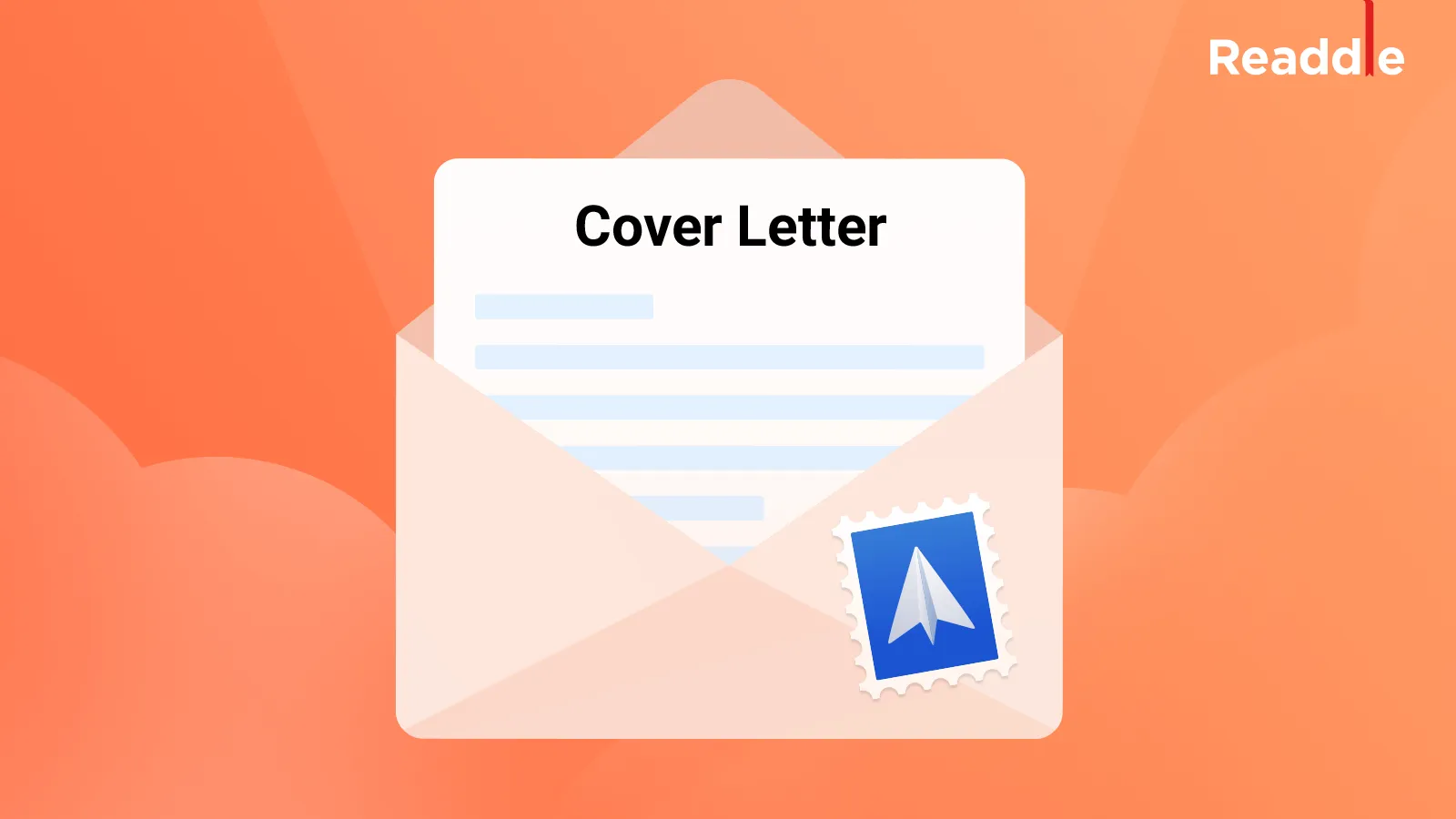Why Cover Letters Still Matter in the Email Age
In an age dominated by digital communication, where emails and online applications have become the norm, it’s easy to question the relevance of the cover letter. Many job seekers wonder if recruiters even bother reading them. However, a well-crafted cover letter sent via email remains a crucial tool in your job-hunting arsenal. It serves as your first impression, a personalized introduction that goes beyond the confines of your resume. It allows you to showcase your personality, passion, and enthusiasm for the role, setting you apart from other applicants. While resumes provide a factual overview of your skills and experience, the cover letter tells a story, connecting your qualifications to the specific requirements of the job and demonstrating why you’re the perfect fit. This is particularly true when you are sending a cover letter via email, as it adds a layer of formality and professionalism to your application, signaling your attention to detail and commitment to the opportunity. Furthermore, cover letters allow you to address any potential gaps in your resume or explain career transitions, giving recruiters a more complete picture of your professional journey. Therefore, by investing time in crafting a compelling cover letter, you significantly increase your chances of landing an interview and ultimately, securing your dream job.
Cover Letter Essentials for Email Submission
When sending your cover letter via email, you must adjust your approach to suit the digital medium. The goal remains the same—to persuade the hiring manager that you are the ideal candidate for the position—but the presentation must be adapted for ease of reading on a screen. This involves careful consideration of formatting, subject lines, and the overall tone of your communication. Ensure your cover letter looks polished and professional to make a great first impression. Keep the language clear, concise, and compelling. Make sure every element of your email, from the subject line to the closing, is designed to capture the reader’s attention and entice them to learn more about you. Your objective is to present yourself as a confident, capable, and enthusiastic candidate who is excited about the opportunity. Tailor your cover letter specifically to the job description, highlighting the skills and experiences that align with the role’s requirements. Demonstrate your understanding of the company and what you can contribute to its success. By adhering to these essentials, you’ll be able to send a cover letter via email that effectively showcases your qualifications and secures you an interview.
Subject Line Strategies That Get Opened
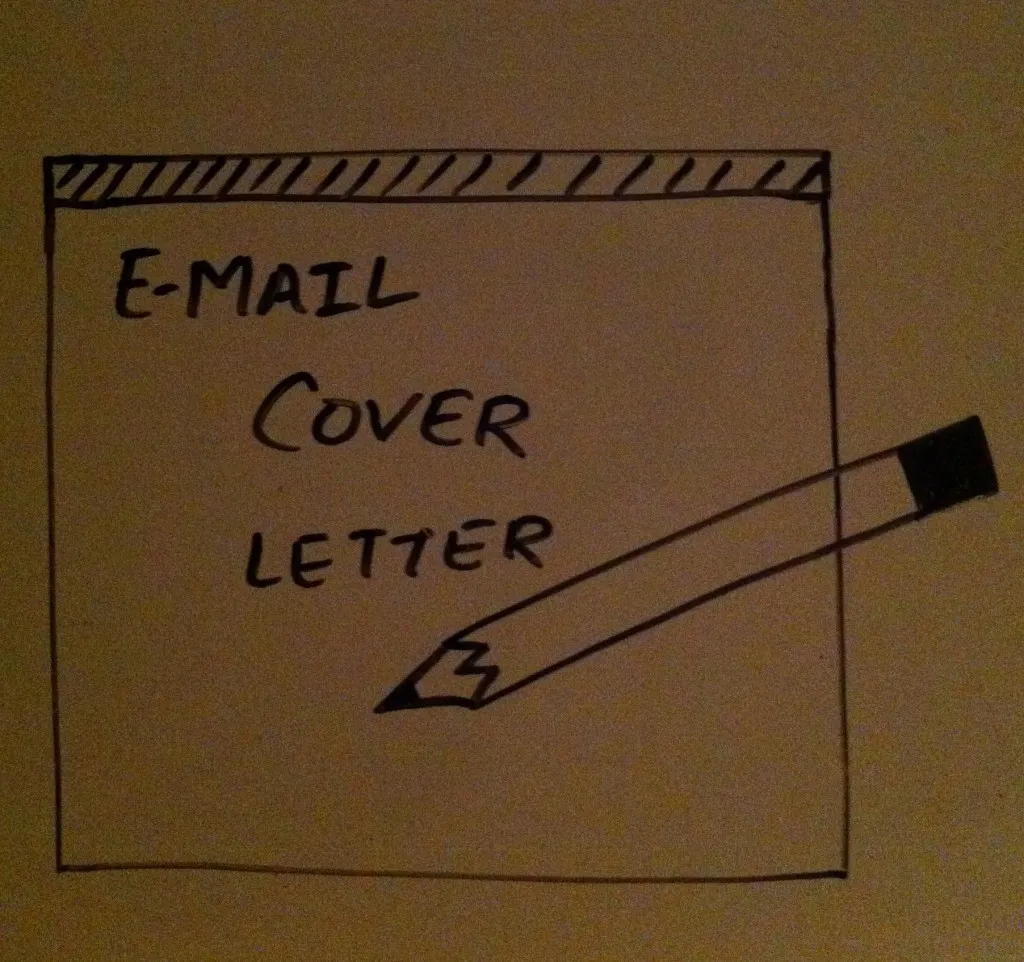
Your email’s subject line is the first hurdle your cover letter must clear. It’s your one shot to grab the reader’s attention and encourage them to open your email. A compelling subject line should be concise, specific, and relevant to the job. Avoid generic phrases such as ‘Cover Letter’ or ‘Job Application,’ which may be overlooked. Instead, include the job title and your name, such as ‘Application for Marketing Manager - [Your Name]’. Alternatively, if you have a referral, mention the referrer’s name to personalize the subject line. For example, ‘Marketing Manager Application - Referred by [Referral’s Name]’. You can also include the job ID or reference number if provided in the job posting to help the recruiter quickly identify the position. Keep the subject line brief, ideally under 50 characters, to ensure it displays correctly on all devices. By employing these strategies, you increase the likelihood of your email being opened, paving the way for your cover letter to make a positive impact and potentially land you the job.
Formatting Your Cover Letter for Email
Formatting is crucial when sending your cover letter via email because it ensures readability and professional presentation. Avoid overly complex formatting that might not render correctly on different devices or email clients. A clean, straightforward layout is the most effective. Use a standard, easy-to-read font like Arial, Calibri, or Times New Roman, with a font size between 10 and 12 points. Keep paragraphs left-aligned and single-spaced for ease of reading. Use bolding for headings and important information to make them stand out. Use bullet points for lists of skills or accomplishments, as they are easily scannable. Keep your letter concise—ideally, no more than one page. Break up large blocks of text with white space between paragraphs to improve readability. When composing your email, consider whether to include your cover letter in the body of the email or as an attachment. Attaching your cover letter as a PDF document is generally recommended, as it preserves the formatting. If you choose to include the cover letter in the email body, ensure the text is clear and formatted properly, avoiding complex formatting that might be lost in translation. Maintaining professional formatting significantly increases the chance of your cover letter leaving a positive impression.
Key Elements to Include in Your Cover Letter
Every cover letter should contain key elements that demonstrate your qualifications, skills, and enthusiasm for the role. Starting with the heading, which should include your contact information, the date, and the recipient’s information (if available). The opening paragraph is where you introduce yourself, state the position you are applying for, and briefly mention how you learned about the opportunity. This immediately captures the reader’s attention. The body paragraphs are where you highlight your skills and experience, demonstrating how they align with the job’s requirements. Give specific examples of your accomplishments, using the STAR method (Situation, Task, Action, Result) to showcase your value. Tailor this section to the job description, emphasizing the skills and experiences that are most relevant. Conclude your cover letter by expressing your interest in an interview, thanking the reader for their time and consideration, and including a professional closing and signature. This strategic inclusion of key elements makes your cover letter more effective and highlights why you are the perfect candidate for the job.
Opening Paragraph: Grab Their Attention
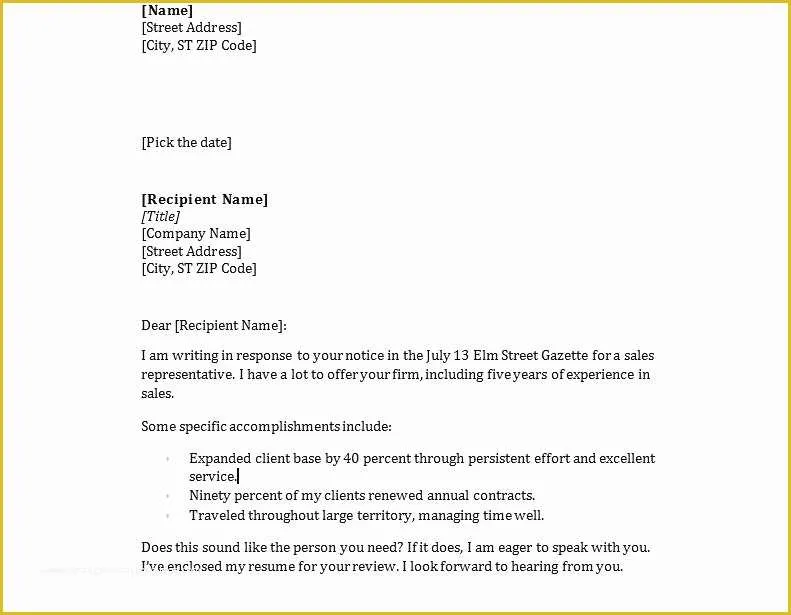
The opening paragraph of your cover letter is your first opportunity to make a strong impression. It should immediately grab the reader’s attention and convince them to continue reading. Start by clearly stating the position you are applying for and how you learned about the opportunity. This shows you are specific and resourceful. You can refer to a specific posting, a referral, or a company event. Next, briefly mention your most relevant qualification or a key achievement that demonstrates your value. This is your hook, designed to pique the reader’s interest. The goal is to make the reader want to learn more about you. Avoid generic openings such as ‘I am writing to express my interest…’ Instead, be direct, concise, and engaging. If you’re applying for a project manager role, for example, you might start by stating, ‘With five years of experience managing complex projects and consistently delivering them on time and under budget, I am eager to apply for the Project Manager position.’ Tailor your opening paragraph to the specific job and company, demonstrating your understanding of their needs. This will set a professional tone and encourage the reader to read your entire cover letter.
Highlighting Your Skills and Experience
The body of your cover letter is the space to highlight your skills and experience in detail. This is where you connect your qualifications to the job’s requirements. Review the job description carefully and identify the key skills and experiences the employer is seeking. Then, provide specific examples of how you have demonstrated those skills in past roles. Use the STAR method (Situation, Task, Action, Result) to structure your examples, providing concrete evidence of your achievements. Quantify your accomplishments whenever possible, using numbers to show the impact of your work. For example, ‘Increased sales by 15% within six months’. Tailor your examples to align with the specific requirements of the job. Avoid simply listing your skills and experiences. Instead, show how you have applied those skills to solve problems, achieve goals, and deliver results. This approach demonstrates your value and makes your cover letter more compelling. Show enthusiasm by highlighting your knowledge of the company and how your skills and experiences will benefit the organization. Use keywords from the job description to ensure your cover letter is easily scanned by applicant tracking systems.
Demonstrating Your Value to the Company
Your cover letter needs to demonstrate your value to the company. It must go beyond simply listing your skills and experiences. Focus on how you can contribute to the organization’s success. Research the company and understand its goals, values, and challenges. Then, explain how your skills and experiences align with those. Use specific examples to show how you have helped previous employers achieve their goals. Highlight any accomplishments that demonstrate your ability to solve problems, improve efficiency, or drive innovation. Show the hiring manager that you understand the company’s needs and that you are a good fit. Quantify your accomplishments whenever possible. For example, ‘Reduced customer service response time by 20%’. Emphasize your enthusiasm for the role and the company, and explain why you are excited about the opportunity. Demonstrate that you are not just looking for a job but are genuinely interested in contributing to the company’s success. Mention your interest in the company’s mission or vision. This shows that you are invested in their success. When demonstrating your value to the company, you’re not just selling yourself; you’re showing the hiring manager how you can become a valuable asset to their team.
Closing Your Cover Letter Effectively

The closing paragraph of your cover letter is your last chance to make a strong impression. It should be concise, professional, and leave the reader with a clear understanding of your interest and what you expect next. Start by reiterating your interest in the position and the company. Briefly summarize why you are a good fit. Then, express your enthusiasm for the opportunity and thank the reader for their time and consideration. Indicate your availability for an interview and how they can contact you. Consider including a call to action, such as ‘I am eager to discuss how my skills can benefit your team’. Avoid generic phrases. Tailor your closing to the specific job and company. Use a professional closing, such as ‘Sincerely’, ‘Best regards’, or ‘Thank you’. Follow this with your typed name and signature. If you are sending a digital cover letter, you can add your electronic signature to ensure it looks authentic. This approach provides a professional finish and reinforces your enthusiasm for the position. Your closing paragraph should leave the reader with a positive impression and encourage them to contact you to schedule an interview.
Proofreading and Editing Before Sending
Before you send your cover letter, proofreading and editing are essential. Typos, grammatical errors, and formatting inconsistencies can undermine your credibility and may cause recruiters to overlook your application. Carefully review your cover letter for any errors in spelling, grammar, punctuation, and sentence structure. Read the document aloud to catch any awkward phrasing or flow issues. Check that all names, titles, and company information are accurate. Proofread multiple times, as it’s easy to miss errors the first time. It can be helpful to have someone else review your cover letter. Ask a friend, family member, or career advisor to proofread your document. They can offer a fresh perspective and catch any errors you may have missed. Ensure that the formatting is consistent throughout your cover letter. Double-check the font, font size, spacing, and alignment. Use a grammar checker to help identify any errors. Consider using online tools like Grammarly or ProWritingAid. Make sure your cover letter is clear, concise, and easy to read. Make any necessary revisions to improve the flow and clarity. Investing time in proofreading and editing ensures your cover letter is polished and professional, demonstrating your attention to detail and enhancing your chances of getting an interview.
Common Mistakes to Avoid in Cover Letters
Avoiding common mistakes can significantly improve your cover letter’s effectiveness. One of the most frequent mistakes is not tailoring your cover letter to each specific job application. Generic cover letters that do not address the specific requirements and demonstrate your understanding of the company are often rejected. Another common error is focusing too much on what you want and not enough on what you can offer the employer. Your cover letter should highlight your skills, experience, and how you can benefit the company. A third mistake to avoid is using excessive jargon or overly formal language. Keep your language clear, concise, and easy to understand. Do not include irrelevant information or anything that is not directly related to the job. Providing a cover letter filled with typos, grammatical errors, and formatting issues is also a big no. Proofread your cover letter carefully before submitting it to ensure it is error-free. Finally, be sure to avoid sounding desperate or negative. Maintain a confident and enthusiastic tone throughout your cover letter. A well-crafted and error-free cover letter will leave a great impression and increase your chances of securing an interview and landing your dream job.
Sending Your Cover Letter via Email: Best Practices
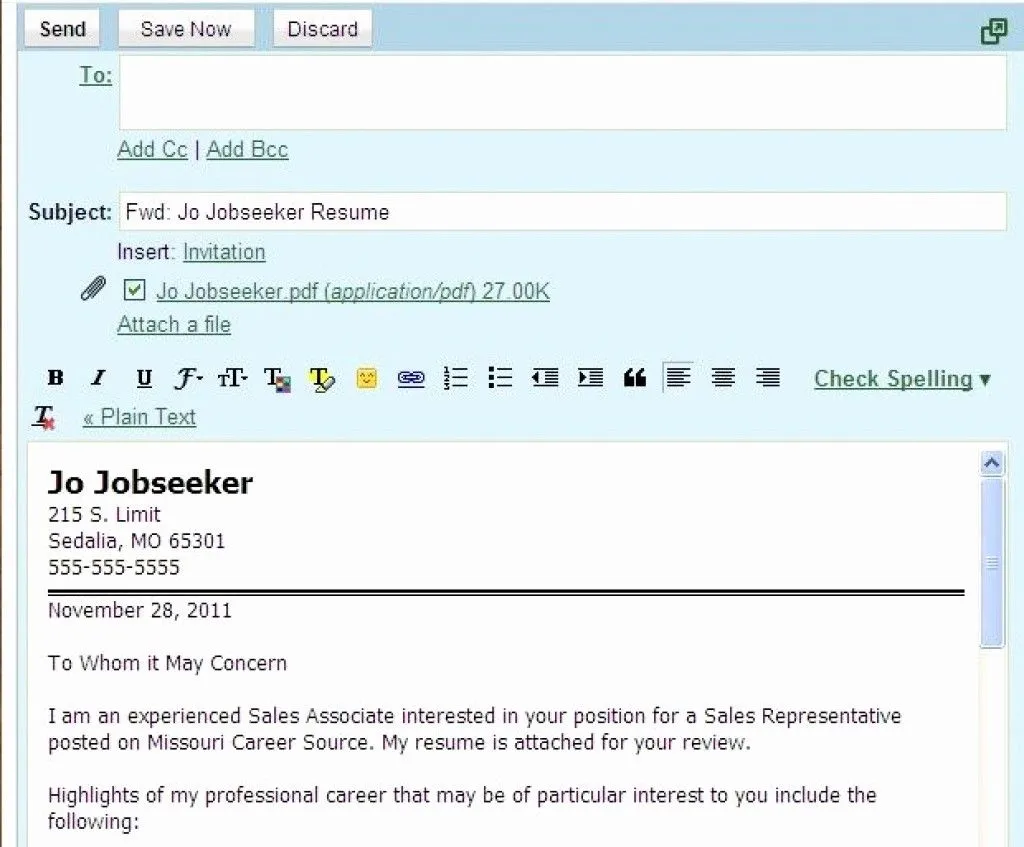
When sending your cover letter via email, adhere to the best practices to present yourself professionally. Start by creating a professional email address. Avoid using informal or unprofessional email addresses. Address the hiring manager by name, if possible. Research the company’s website or LinkedIn to find the correct contact. In the email body, include a brief greeting and a concise statement about the position you are applying for. This is a quick introduction before the reader opens the attachment. Attach your cover letter and resume as PDF files. PDF files preserve the formatting. Make sure your attachments are clearly labeled with your name and the document type, such as ‘YourName_CoverLetter.pdf’ and ‘YourName_Resume.pdf’. Avoid attaching large files that may slow down the download process. Use a professional email signature that includes your full name, contact information, and a link to your LinkedIn profile or online portfolio. Check the email before sending it to ensure that the attachments are included and that all links work correctly. By following these best practices, you demonstrate professionalism and increase the likelihood of your application being reviewed and considered.
Choosing the Right Email Address
The email address you use to send your cover letter is your digital calling card, so choose wisely. A professional email address is one that includes your full name or a variation thereof. For instance, ‘firstname.lastname@email.com’ or ‘f.lastname@email.com’ is a safe choice. Avoid using nicknames, abbreviations, or unprofessional email addresses. These can create a negative impression and make you seem less serious about the job. If your name is very common, add a middle initial or a number to differentiate yourself, such as ‘john.a.doe123@email.com’. Create a dedicated email address specifically for your job search, such as ‘yourname.careers@email.com’. This helps you keep your job search separate from your personal email and ensures that you don’t miss any important communication. Make sure the email address you use is active and that you check it regularly. Prompt responses to emails are essential during the job search process. By choosing the right email address, you project a professional image and increase your chances of being taken seriously by potential employers.
Attaching Your Resume and Cover Letter
Attaching your resume and cover letter correctly is crucial for presenting your application professionally. Always attach your resume and cover letter as PDF files. PDFs preserve your formatting, ensuring that your documents appear as intended. Label your files clearly and consistently. Use a naming convention that includes your full name and the document type, such as ‘YourName_Resume.pdf’ and ‘YourName_CoverLetter.pdf’. This helps the recipient identify your documents quickly and organize their files. Double-check that you have attached both your resume and cover letter before sending the email. This may sound obvious, but it is a common mistake that can be easily avoided. If you have other supporting documents, such as writing samples or portfolios, include them as separate attachments or create a single PDF with all supporting materials. Keep the file sizes of your attachments reasonable. If your attachments are large, consider compressing them or using a file-sharing service. Before sending, open the attachments to verify that they are the correct versions and that they open properly. Attachments represent your first impression, so ensure that they are clear, organized, and free of errors. By following these best practices, you ensure that your application is complete and professional, giving you the best possible chance of securing an interview.
Following Up After Submitting Your Application
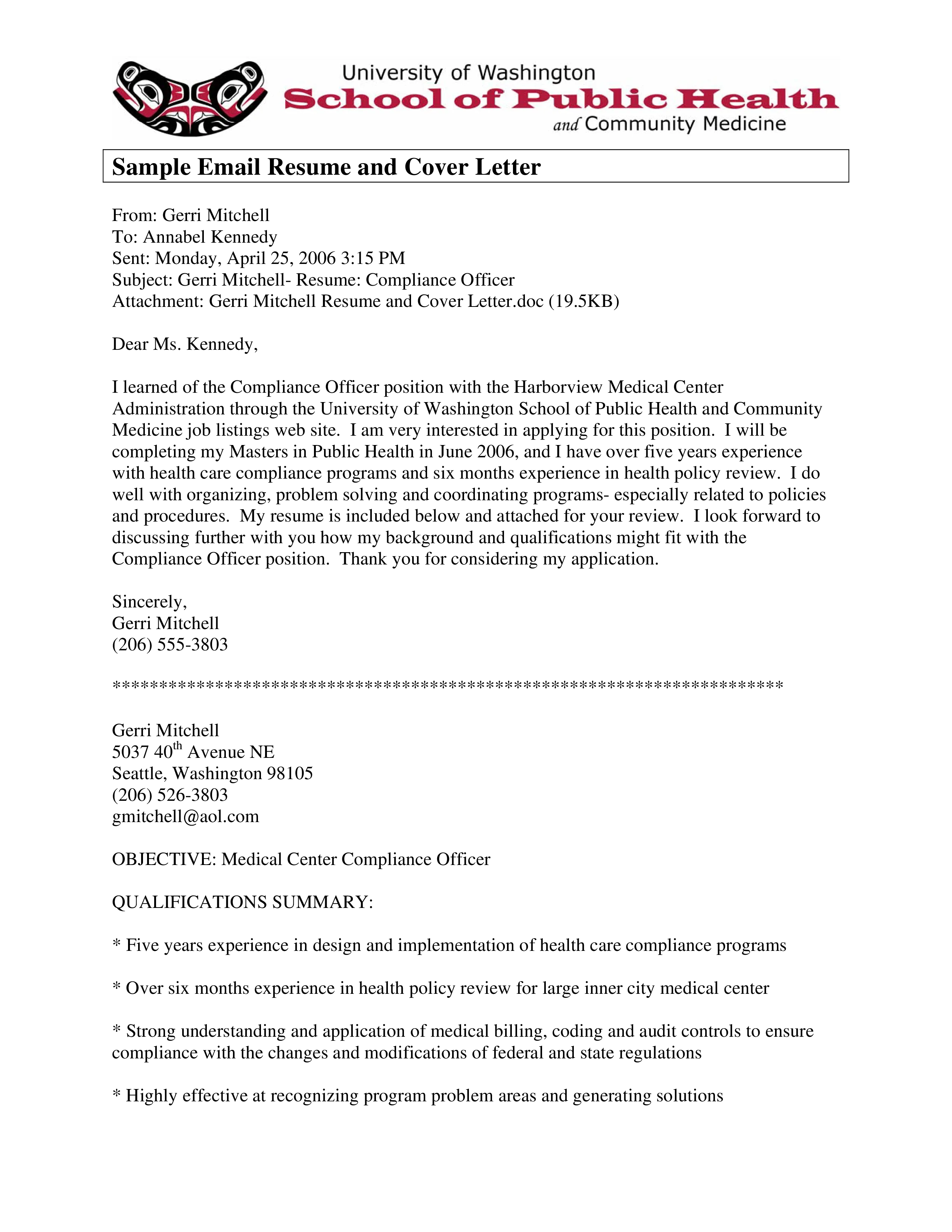
After sending your cover letter via email, it’s important to follow up. This demonstrates your continued interest in the position and reinforces your commitment. Send a follow-up email approximately one to two weeks after submitting your application. Do not send the email sooner, as the hiring team may still be reviewing applications. Keep your follow-up email brief and polite. Start by restating your interest in the position. Refer to your cover letter. Briefly reiterate your key qualifications. Ask politely whether the hiring manager has received your application and if they have any questions. Thank them for their time and consideration. If you have not heard back after a reasonable period, send another follow-up email. However, avoid sending multiple follow-up emails, as this can be seen as overly persistent. Be patient. Understand that the hiring process can take time. Be professional and positive. Demonstrate that you are eager to learn more about the role. By following up, you remind the hiring manager of your interest, reinforce your qualifications, and demonstrate your professionalism, all of which can increase your chances of getting an interview.
